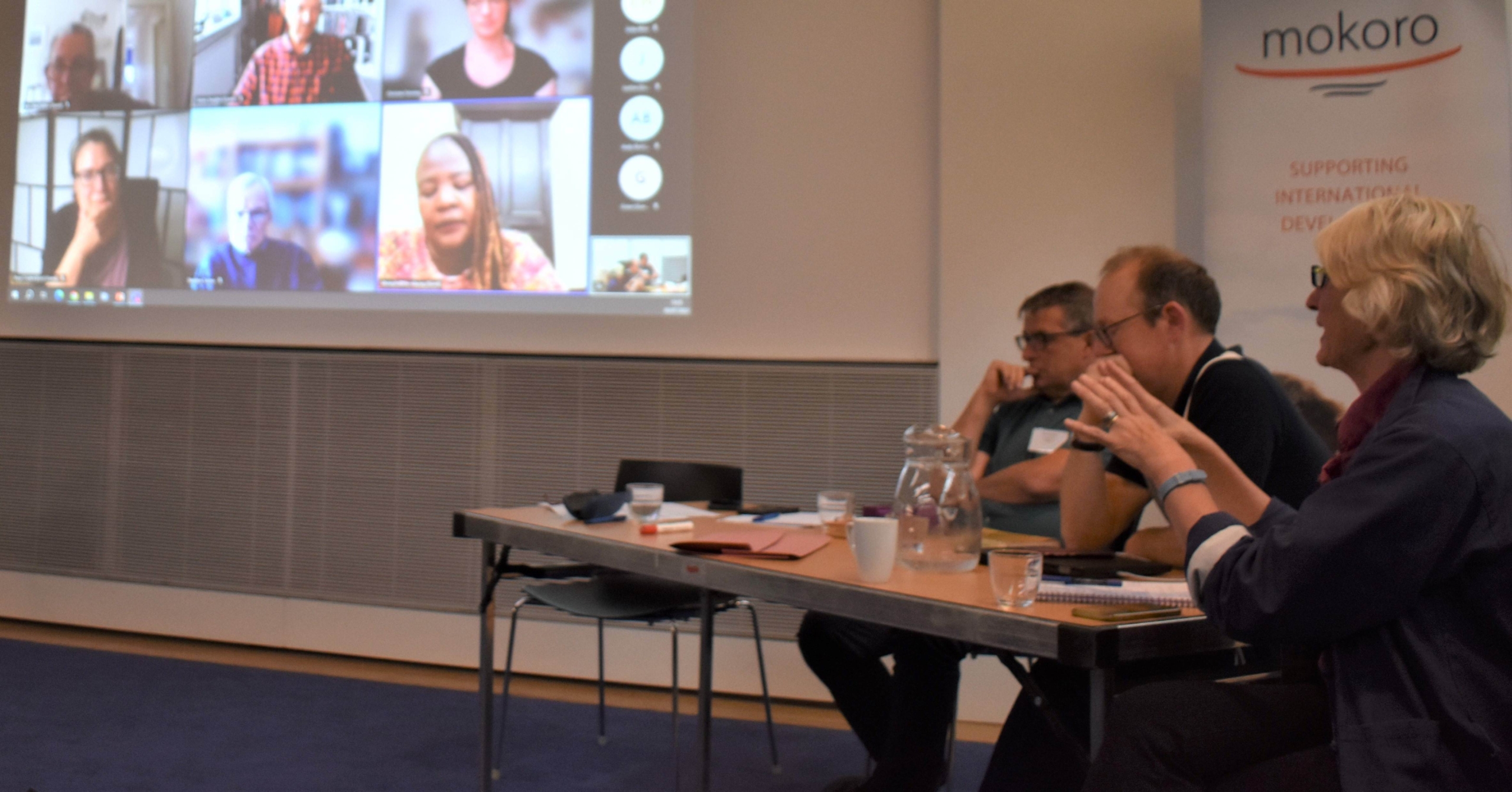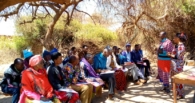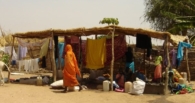An evaluation of the Inclusion through Disability Sport project
Fiona Dixon
30 April 2014
/
- 0 Comments
The last time I was in Uganda (more years ago than I care to think about) Kampala was a quiet and relatively traffic free environment. I stayed in a very run-down Speke Hotel where large fruit bats would hang upside down in a tree whose branches spread across the hotel room balcony. Unsurprisingly I found a very different place when I visited Uganda in early April on the first of my field assignments with Mokoro. I left behind the now heavily congested Kampala with its numerous international standard hotels and headed north on a six-hour journey to reach the more manageable town of Gulu.
I understand Gulu too was a different sight less than a decade ago when it was the epicentre of a vicious conflict pitting the Ugandan government against the rebel Lord’s Resistance Army (LRA). It was a town of the displaced. Fearful of attacks by the LRA people flocked to the town, seeking refuge and safety in public places including schools and hospitals. Successful negotiations in 2006 brought much sought-after peace to Gulu since when some semblance of normality has returned. There are remnants of the camps that were established for displaced people, but most are now abandoned as people have returned home. Traders who fled from the conflict are back, and the town is buzzing with shops that sell everything from sportswear to computers, generators and even tractor spare parts. There are now around 15 banks in the town, compared with only two a decade ago, and numerous quite chic coffee shops and bars have sprung up. Traffic on the strategic route linking Uganda via Gulu to South Sudan is heavy, and has taken its toll on the road to Uganda’s capital.
In Gulu I met with Dan Opio, a Ugandan consultant who joined me to undertake an evaluation of the Inclusion through Disability Sport (IDS) project. This is not typical of Mokoro assignments, but called for a team with significant experience of the disability sector, which gave me a unique opportunity to bid for the work under the Mokoro umbrella.

Ojara Denis playing basketball
Case Study
On our first day Dan and I met Ojara Denis who made an interesting case study and is typical of some of the young people we met. Denis is a young, fit man who plays and coaches basketball every day of the week in Gulu. His ambition is to represent Uganda in the 2016 Paralympic games in Brazil. Denis has been paralysed since he caught a fever at the age of three. His mother, determined that he should have an education, carried him to school every day until he was nearly thirteen years old. But with the sudden death of his father, the family could no longer fund the costs associated with his education. Denis borrowed money to sit school exams, but without teaching support his results were not good. His efforts to earn a living are hampered by negative attitudes from employers and lack of capital and skills to set up on his own. Denis first came into contact with the Inclusion through Disability Sport project in 2010 when he was approached by a project peer mentor and given support to apply to a local Christian mission for a wheelchair. This simply and instantly transformed Denis’ life by giving him mobility and independence. The peer mentor then encouraged Denis to attend the project’s sports training events in Gulu town, where he has obtained considerable skills in wheelchair basketball and become an active member of the Gulu wheelchair basketball squad. In addition to a notable increase in physical strength and well-being, Denis has developed a strong friendship group, is now a player-turned-coach for the IDS project, and has extremely positive ambitions with regards to his favoured sport. Moreover, he is active in identifying and encouraging young people with disabilities to join the IDS sports activities, and has gained considerable kudos among the young people in the community in his position both as coach and player.
Broader context
In recent years, there has been a significant increase in sport-for-development (SfD) programmes. In part this was fuelled in 2003 by the UN General Assembly adoption of a resolution affirming its commitment to sport as a means to promote education, health, development and peace and to include sport and physical education as a tool to contribute towards achieving the internationally agreed development goals. There are now high expectations of sport, with large development potential ascribed to it. Sport is considered to be beneficial in developing social and emotional competencies by nurturing individual traits including self-esteem and communication skills, as well as instilling values such as teamwork and tolerance. Sport is also being applied to address various issues, including: integrating marginalised groups; overcoming trauma; creating health awareness; fostering gender equity, among others.
The 2006 UN Convention on the Rights of Persons with Disabilities (CRPD) is the first legally binding instrument that makes explicit the rights of persons with disabilities to sport, and the obligation on State Parties to take appropriate measures to deliver accessibility to both mainstream and disability-specific sport. Uganda has signed and ratified this convention. The Ugandan Government is recognised as one of the most progressive African governments with regards to recognising the rights of people with disabilities, yet there remain significant gaps in access to sport.
It is within this context that the ‘Building an inclusive community through disability sport’ (IDS) project was established. IDS is being funded by Comic Relief who have sponsored ‘Sport for Change’ initiatives as well as commissioned research into the impact of sport-for-development.
Basics of the IDS design
The IDS project was designed to use sport to empower children and change attitudes. It established an inclusive sports league for disabled children. The project aims to bring about two main changes in the lives of disabled children in northern Uganda. First it uses sport and peer mentoring to increase disabled children’s self-efficacy, providing them with the confidence to challenge discrimination, advocate for their own inclusion and take responsibility for their own health and well-being. Secondly the project uses sport to change attitudes about disability in the local community. One of the biggest challenges that disabled children face is the stigma attached to disability, which leads to isolation and rejection. By bringing non-disabled and disabled children together to play sports, non-disabled children and their parents will gain a greater understanding of the abilities of disabled people. The project also targets teachers who are often reluctant to teach disabled children or include them in classroom or sports activities.
The project has reached around 580 children with disabilities who have started playing regularly in local inclusive sports leagues and/or have support from peer mentors. These peer mentors have built a reputation based on trust and respect within their communities and have also been an essential mechanism to reach children who are not in school. Trained coaches run and manage sports leagues to include a range of sports such as wheelchair basketball, football, boccia, showdown, goalball, and volleyball which are adapted to allow children across the range of disabilities to participate. At least 15 percent of children who participate in these sporting events are able bodied. Sporting events are held in venues in very public locations where members of the community see children demonstrating their abilities each week.
Establishing sound partnerships
The IDS project is being implemented by Motivation, a UK-based NGO working in partnership with two local partners, the Gulu Disabled Person’s Union (GDPU) and The Kids League (TKL). Motivation provides technical and monitoring inputs and a link to the principal project donor (Comic Relief); GDPU is the most significant disability organisation in northern Uganda with considerable reach to and experience with its constituency, but is constrained by limited resources and skills; TKL specialises in running sports leagues in Kampala which have been extended to reach disadvantaged children; it brings experience in sport-for-development initiatives (though it had limited disability experience) and has access to potential sponsorship from the corporate sector in Kampala.
On paper this partnership is strong, and it has been very effective in delivering project activities on the ground. However, it has struggled at a strategic level to realise the benefits of the partnership and this may impact on the longevity and sustainability of the programme. In part this is due to the intrinsic problems that NGOs experience when they rely to a significant degree on volunteers, and have limited resources and capacity outside specific funded projects. However, other factors that are significant include the Kampala-centric nature of the TKL, coupled with the travelling distance and time between Kampala and Gulu and the dreadful state of the road between the two locations. An improved road would do much to ease the coordination and communication between local partners at a board/strategic level, and might even encourage a few potential corporate sponsors to visit Gulu.
Issues in measuring project performance
There is recognition in the sport-for-development sector of the weakness in presenting programme evidence, and that evidence must move from the anecdotal to the empirical. There is acknowledgement that the sector as a whole needs to do better to communicate sport and its value, not just describing a generic benefit or a catch-all that ‘sport is great’. Partners therefore made creditable attempts to introduce tools that had been developed and tested in other locations in order to provide empirical data and evidence of change. There was huge institutional learning in this regard. The principal tools adopted were (i) the ladder of change (LoC) which is a simple scale which periodically records each mentored child’s level of confidence and independence; (ii) a baseline and annual impact survey, and (iii) most significantly, change workshops to collect stories of change in children’s lives.
Although the IDS project established a strong framework for collecting evidence, and managed the process of collecting and storing data well, neither of the two principal tools was tested in the field and context of northern Uganda. The LoC information collection was the responsibility of the peer mentors and had to be completed on a regular basis during engagements with children with disabilities. What had not been foreseen was that many of the peer mentors recruited by the project are people with disabilities, many of whom have poor levels of education, and struggled to understand and complete the LoC. Programme staff recognised these limitations and had to adjust the LoC twice over the three-year programme which reduced the quality of the data collected as well as making it difficult to make time period comparisons. Partners are debating whether the tool was the problem or whether the problem rests with the criteria and processes for recruitment of peer mentors who were largely identified by word-of-mouth, and recruited without having to submit to interview and vetting processes.
Leaving a lasting legacy
There is little doubt that the IDS project has had a significant and lasting change on the children with disabilities and their families that were reached. Strong qualitative and quantitative evidence exists in the IDS project that sport can help marginalized people to acquire the skills and self-confidence needed to both overcome personal barriers and advocate for the elimination of structural barriers to their fuller participation in community life. When integrated properly with other community programmes and services (in this case through the peer mentoring structure), sport initiatives can also connect participants to resources that help them in this process, such as health and education services.
But what happens when the funding finishes? The IDS project has done much to ensure that long-term building blocks are in place, including:
- It has trained a cadre of coaches, many of whom are disabled people who have developed a strong commitment to the IDS philosophy and programme.
- Similarly, by engaging with a network of people with disabilities as peer mentors who are based in and come from local communities, the GDPU is assured that some of the peer mentoring services will continue even if funding is not secured.
- It has worked closely with schools using some of the staff as peer mentors and coaches, which has had a significant impact on the way schools operate and view their pupils with disabilities.
- Disability sport is now on the agenda of the District Education & Sports officers, who are ostensibly planning events around a national calendar of sporting activities for young people with disabilities.
However, it is clear that the IDS project has fallen short of its task to develop a long-term fundraising strategy for GDPU, and most specifically for securing resources to maintain the IDS project. The expense of running sporting and peer mentoring activities means that without further funding, the scale of activities will be curtailed for the foreseeable future. Also, while the DE&S sports officers have much greater awareness of disability, there is little sign that disability has been mainstreamed across the education department, and that budgets for the activity are forthcoming. Much more is needed to engage government and promote a mainstreaming agenda for disability.
Furthermore IDS project partners would do well to prepare a business case that can be presented to the corporate sector identifying clear reputational benefits, employee engagement and a bolstering of a corporate organisation’s social responsibility profile. The lessons learned, and anecdotal evidence, including personal case stories, are particularly compelling and are a testament to the power of sport as an agent for development and social change.
You must be logged in to post a comment.



